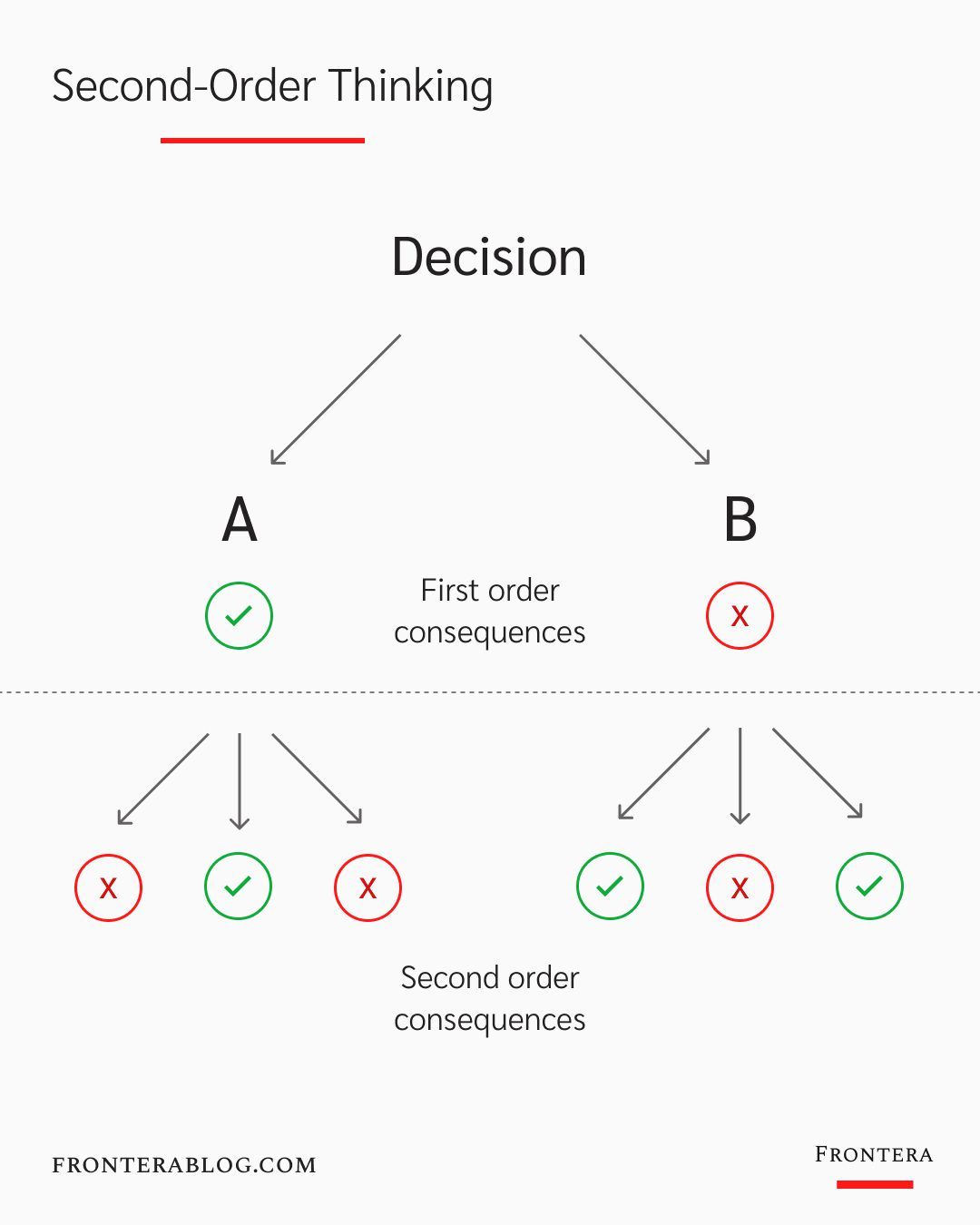- The Productivity Blueprint
- Posts
- Second-order thinking: how to make better decisions in life
Second-order thinking: how to make better decisions in life
Welcome to The Productivity Blueprint newsletter 🗞️
Last week we delved into long term changes and how to maintain them throughout your life. If you missed last week, you can catch up here 🙂
Today we will be focusing on second-order thinking, we will take you into the depths of what it is, and techniques you can use for practice.
“Most people stop at first-order thinking. But for better decisions you need to ask, ‘And then what?’”


Frente Brands shows how thinking just about the immediate consequences of decisions (first-order thinking) often leads to poor long-term outcomes. They argue that second-order thinking — anticipating what happens after the first result — gives you better decision outcomes in life and business.
Below are key insights from the article, structured to help you apply this mindset in real situations:
What is first-order vs second-order thinking
First-order thinking focuses on immediate effects. It’s fast, feels easier, often based on what seems obvious. For example: “If I do this, I’ll get this benefit right away.”
Second-order thinking pushes you to consider what happens after that immediate effect. What are the ripple effects? What unintended outcomes might follow? What happens next?
Why second-order thinking matters
Many decisions with strong first-order benefits come with costs or complications that show up later. If you don’t anticipate these you might end up worse off.
It helps avoid traps: small wins that lead to long-term pain, or choices that seem good now but degrade trust, reputation, resources, energy, etc.
Using it gives you competitive advantage: fewer people bother thinking this far ahead, so spotting these downstream effects can let you make choices others miss.
How to practice second-order thinking
Always ask “What happens next?” after any important decision. Then ask again, “After that?”
Map out likely consequences, including less obvious or delayed ones (both positive and negative).
Consider trade-offs: sometimes you’ll accept a lesser first-order result because it sets up a stronger second-order outcome.
Use this especially when stakes are higher — decisions with long timelines or big impact. For trivial or small decisions, first-order might suffice.
TL/DR: Thinking only about what happens right away blinds you to what comes next. Second-order thinking — asking “What then?” and “What after that?” — lets you avoid hidden costs, seize opportunities, and make decisions that hold up long term.

Decision-tree mapping tool (digital or just on paper)
Draw your decision at the root, then branch out first-order effects, then second, maybe even third. This visual helps you see hidden consequences before choosing a path.Pros/cons plus delayed impacts journal
Whenever you consider a big decision, list pros & cons and add a column for downstream effects (6-12 months later, or further). Over time you’ll get better at spotting patterns. Tools like Evernote / Notion work well for setting up this kind of structured journaling.

💡 Challenge of the week
Over the next 7 days, pick one decision you expect to make (big or medium size). It could be about work, routines, investments, project strategy, etc. Then:
Write down the first-order outcome (what happens right away).
Then ask “And then what?” at least twice more — i.e. map second-order and third-order consequences.
Use that mapping to choose among options.
At the end of the week reflect: did thinking ahead change what you decided? Any surprises?
Decisions don’t end when you act. They echo, ripple, and return in ways you might not expect. When you habitually think beyond the immediate, you give yourself a shield against unexpected downside and a lens for spotting better paths. Keep asking “what next,” and see what clearer decisions look like over time.
Until next week,
The Productivity Blueprint Team
If you’re enjoying The Productivity Blueprint, spread the word by sharing the sign up link with a colleague or friend. We appreciate the support 🙏
Partner with The Productivity Blueprint!
Contact us to learn more.